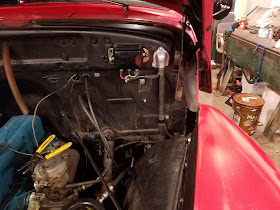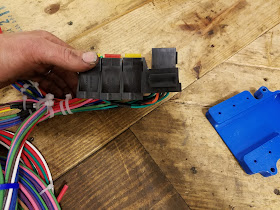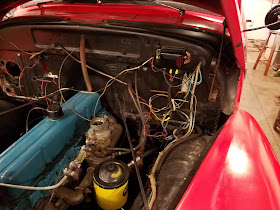So , the Dodge 218/230 truck T5 conversions are actually relatively simple to do. I normally do not make these parts but I might start if there is enough of an interest.
The truck bellhousings actually have enough material where they can be redrilled for the T5 bolt pattern. What's nice is that because of their overall length, there isn't a need for any adapter or special made clutch disc. However, there still are several issues that need to be addressed.
The register hole on the bellhousing is 4-3/4" diameter where as the register diameter on the T5 is 4-11/16". A simple ring is needed that presses onto the register of the T5 to make if 4-3/4" diameter.
You can see that on the one side, there is a slight lip. This lip fits into the chamfer on the bellhousing hole and prevents the ring from coming off.
The next issue is the pilot bearing. To provide adequate support to the T5's input shaft, the pilot bearing has to stick out from the back of the crank a bit.
Another issue is that on some of the bolt patterns drilled into the stock truck bellhousing, the upper driver's side hole interferes withe the T5's hole. So, the easiest way to address this is to take a bolt and thread it in until is tightens up. Then, cut it off, grind flush and stake it so that it can not back out. Very carefully, drill and tap the new hole.
The last issue to address is to machine a collar to press into the original release bearing. This reduces the ID so that the release bearing will properly ride on the T5's bearing retainer.












































